| On South Western Avenue there exists a spectacular example of an art deco style streetscape. Though thousands of drivers pass by every day without realizing it, the South Western Avenue Improvement, as it is called, is an amazingly intact example of an era when street overpasses, railroad viaducts, and even lampposts were built to be aesthetically pleasing. The entire area is essentially an interchange between Western Avenue, Western Boulevard, 31st Street and 31st Boulevard. Also included are two railroad viaducts and the centerpiece, an 8-lane bridge over the Sanitary & Ship Canal. The 31st Street/Boulevard portion west of Western includes a railroad viaduct that was probably built before the Improvement project. Railroad crossings of the boulevard system, such as this one, have always been required to be of a decorative nature. |  Chicago Tribune, 1939. |
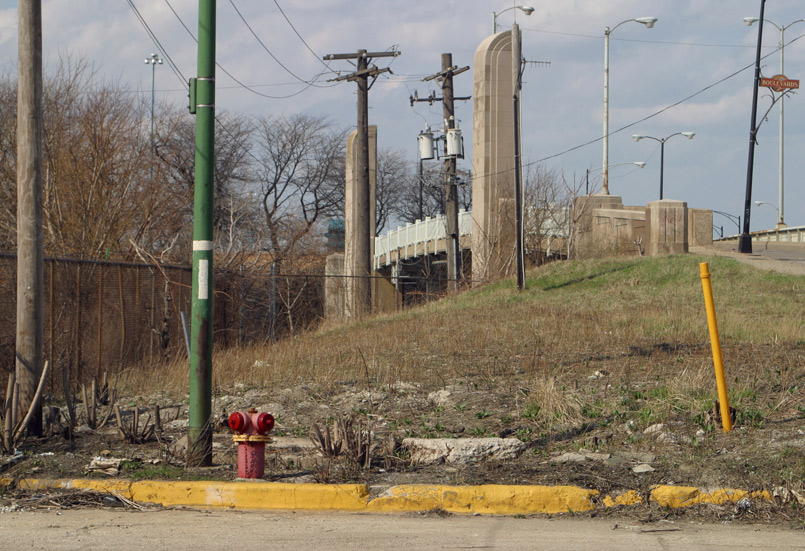
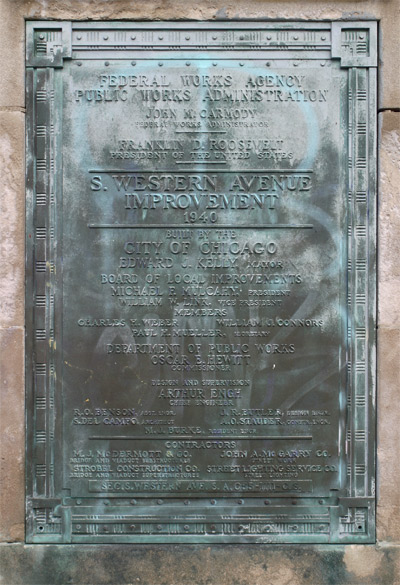 |
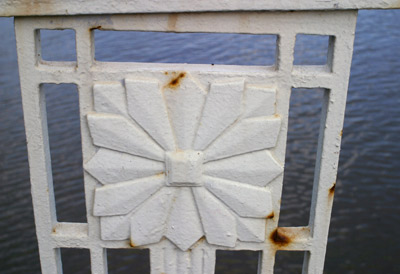
Above: Floral detailing abstracted for the machine age on the railing of the pedestrian walkway.
Left: The requisite commemorative plaque detailing all involved with the project. These plaques are located on the canal bridge as well as the Western Boulevard overpass. Mayor Kelly’s name is fairly prominent on public works projects, but nowhere near as much as hizzonner’s would be in later years. |
This project was built with Public Works Administration (PWA) funding. Completed in 1940, it replaced a swing bridge dating from 1900. The new bridge was a vertical lift bridge, though the lift portion was removed within the last 20 years. Everything was designed with an art deco/moderne flair, including the bridge railings, lampposts, and the huge concrete non-movable portions of the bridge. South of the bridge, Western Avenue/Boulevard passes under a railroad viaduct with similar accents. Then, Western Boulevard crosses over to the east side of Western Avenue on another similarly designed overpass.
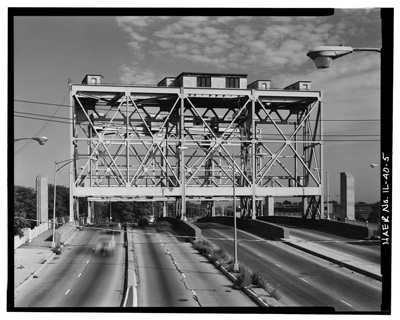
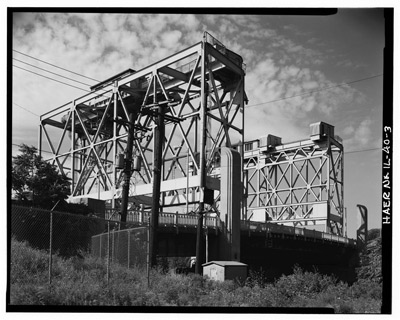 Library of Congress, Prints and Photographs Division, Historic American Buildings Survey or Historic American Engineering Record, HAER ILL, 16-CHIG, 163-5 (left) and HAER ILL, 16-CHIG, 163-3 (right).
Library of Congress, Prints and Photographs Division, Historic American Buildings Survey or Historic American Engineering Record, HAER ILL, 16-CHIG, 163-5 (left) and HAER ILL, 16-CHIG, 163-3 (right).
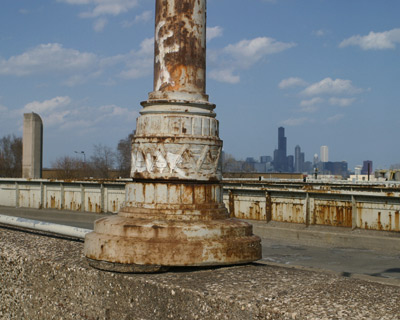
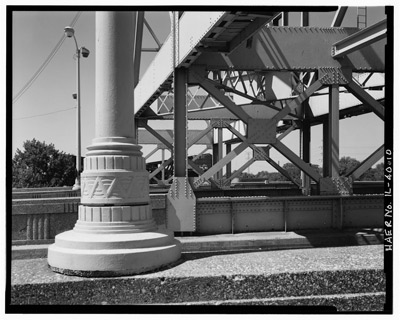 Right: Library of Congress, Prints and Photographs Division, Historic American Buildings Survey or Historic American Engineering Record, HAER ILL, 16-CHIG, 163-10.
Right: Library of Congress, Prints and Photographs Division, Historic American Buildings Survey or Historic American Engineering Record, HAER ILL, 16-CHIG, 163-10.
Right: A similar view in 1988. The city’s paint budget must have been large at this time.
 Chicago Tribune, 1939. Chicago Tribune, 1939. |

Two views facing north toward the Western Boulevard Viaduct from 34th street. The image at left is from a 1939 Chicago Tribune article explaining the improvement, and the street level image at right was taken in 2007. |
This entire project has remained amazingly intact, with most of the decorative features still present. Besides the removal of the lift bridge, the Stevenson Expressway was built across Western between the lift bridge and the railroad viaduct in the 1960s. However, this does not detract from the beauty of the entire project. Hopefully it can be preserved and restored in the future, as some of the roadbed appears to be in pretty bad condition. Knowing Chicago’s history with viaducts, which involves decades of neglect punctuated by a sudden demolition, we’re not counting on it.
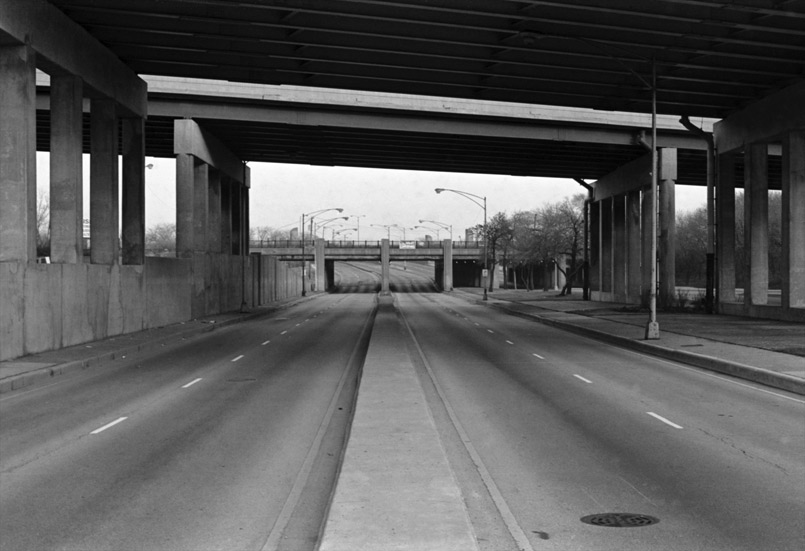

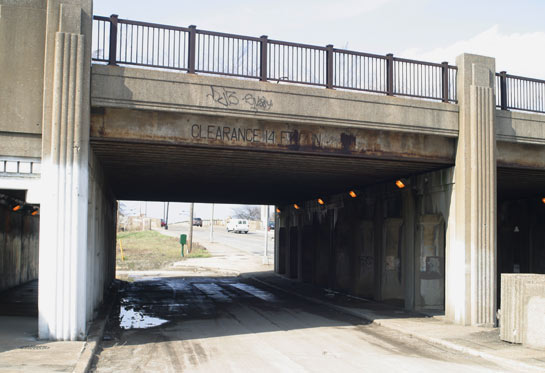
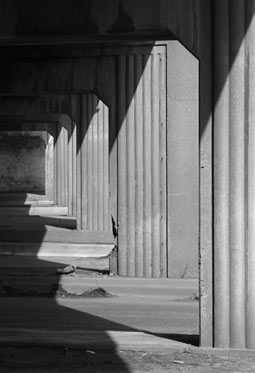
The Western Boulevard overpass. The decorative touches match the railroad viaduct, canal bridge, and streetlight bases, providing the whole project with aesthetic uniformity.
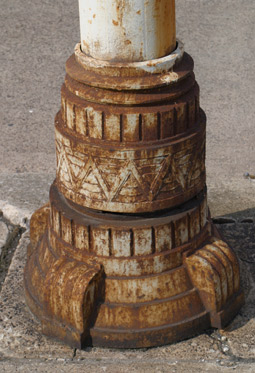

Amazingly intact and beautiful Art Deco style streetlight bases.

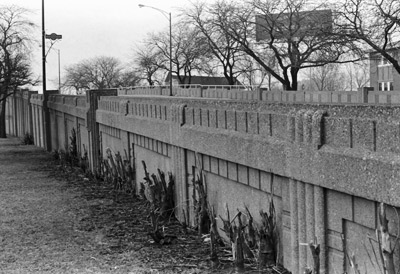
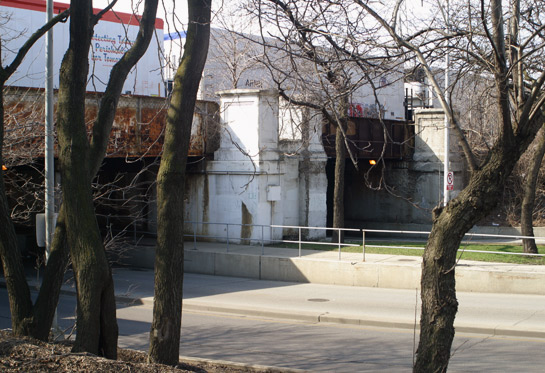
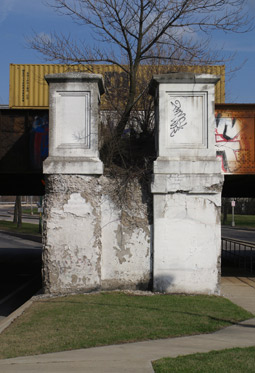

The railroad viaduct over 31st Street and 31st Boulevard (formerly Marshall Boulevard), although not part of the improvement, contains some interesting decorative touches. This viaduct was built around 1902 as a compromise between the West Park District (there was no unified Park District until 1937) and three railroad companies, the Pennsylvania, the Chicago Junction, and the Terminal Transfer. The interest of the West Park District was to connect 31st Boulevard with Western Boulevard. These were previously disconnected, lacking an underpass beneath the tracks.
“BOOST FOR BOULEVARD UNION :Three Railroads Asked to Agree on Troublesome Subway or Suggest New Proposition..” Chicago Daily Tribune (1872-1963), July 23, 1901, http://www.proquest.com.proxy.cc.uic.edu/ (accessed December 11, 2008).
- The 12th Street Bridge That Never Was
- Bridge Out For Good
- Bridgeport’s Chicago & Alton Railroad Bridge
- Olde Western Avenue
- Lake Shore Drive Redux



